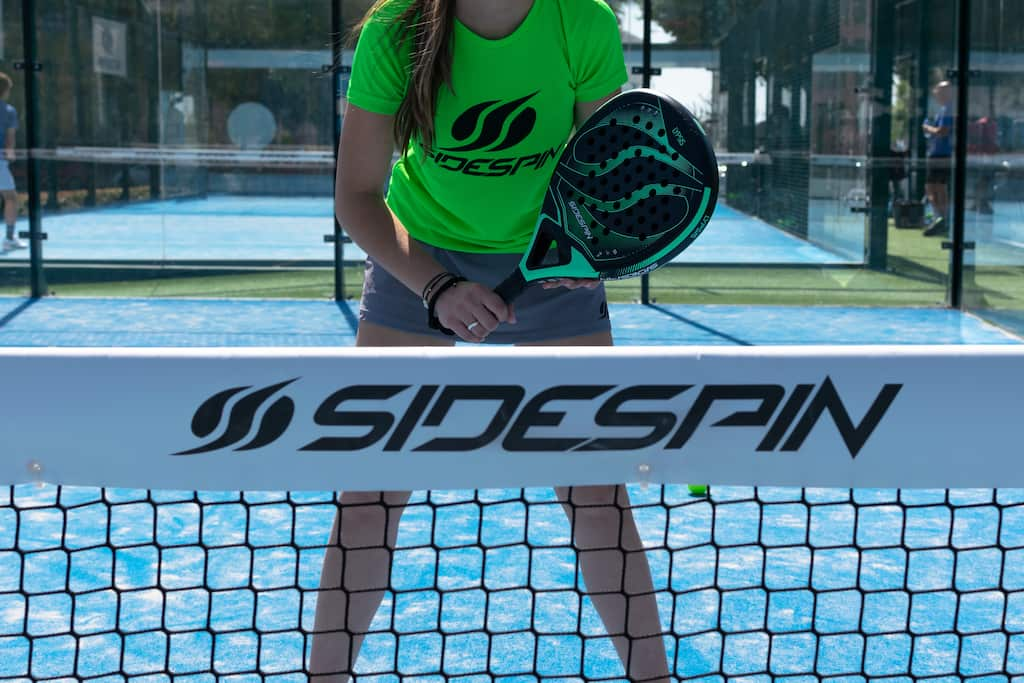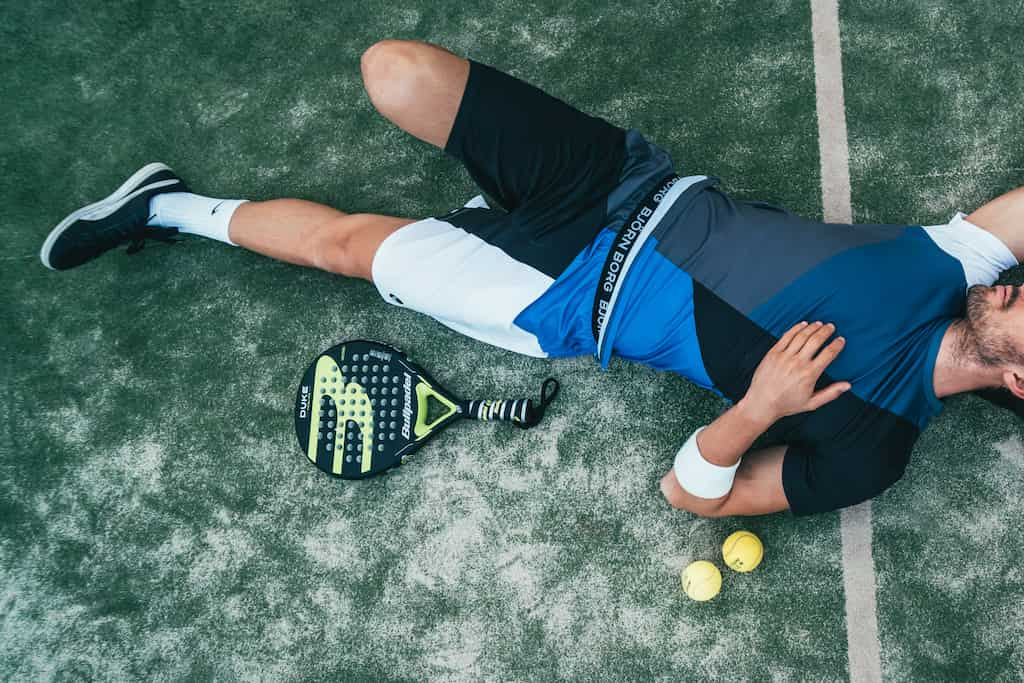Padel is a captivating fusion of tennis, squash, and badminton, creating a unique racquet sport experience that demands quick reflexes, strategy, and most importantly, impeccable footwork. Drawing parallels from tennis footwork, Padel requires players to maintain a good balance of body weight and use techniques like the split step.
On the Padel court, how you move can determine the outcome of a rally, if not the entire match. Efficient movement isn’t just about speed; it’s about body position, balance, and anticipation. Your upper body should remain stable as your legs do the work. As the sport continues to garner global attention, understanding the nuances of footwork becomes paramount.
Whether you’re stepping onto the Padel court for the first time, moving forward in your training, or looking to elevate your game, the significance of mastering your footwork cannot be overstated. But what makes footwork so vital, and how can you improve it?
Key Takeaways
- Proper footwork ensures optimal positioning, allowing players to return shots effectively and defend their court.
- Mastering movement techniques boost agility, aiding players in handling fast-paced rallies and unpredictable ball directions.
- Starting with basic footwork techniques provides a sturdy base for building advanced skills and optimizing in-game performance.
Fundamentals of Padel Footwork

Padel footwork is a crucial aspect of playing Padel, and it involves a combination of movement, position, form, technique, agility, balance, stance, good posture, and correct footwork. The lateral shuffle is key for side-to-side movement, while the cross step combined with the outside leg can be utilized for sharp direction change. To improve your Padel footwork, it is essential to understand the fundamentals of Padel footwork.
The Ideal Starting Position
The starting position is pivotal in Padel. Players should stand with their feet shoulder-width apart, knees slightly bent, and weight evenly distributed. The body should face the net, with the racket at waist height.
Techniques for the Ball Approach
When moving to hit the ball, utilize the side shuffle. Taking small, quick steps and keeping feet close to the ground ensures agility and balance. Pivoting with the non-dominant foot aids in quick direction changes.
Maintaining Proper Form
Players must focus on their form and technique. Keeping the body low, knees bent, and weight on the balls of the feet is key. The racket should always remain in front, using the wrist to generate power during shots.
Significance of Agility and Balance
Agility and balance hold a central place in Padel’s footwork. It’s essential to keep the center of gravity low, using arms to aid in movement control.
Improving Padel Footwork
Improving Padel’s footwork is essential for any player who wants to take their game to the next level. Whether you’re a beginner or a seasoned player, there are several techniques and drills you can use to improve your footwork and become a more efficient player on the court.
The Role of Drills
Practice is vital for enhancing footwork. Drills like ladder drill, cone drills, and shuttle runs hone coordination, reaction time, and speed.
Shot Practices
Consistent practice of forehand, backhand, and volley shots helps in refining footwork. Simultaneously, integrating footwork drills with shot practice boosts comfort during actual games.
Incorporating Shadowing
Shadowing, or mimicking an opponent’s moves, aids in predicting their actions and refining one’s own reaction time.
Strategies and Positioning
Padel footwork is not only about moving around the court but also about being in the right place at the right time. Proper positioning can give players an advantage over their opponents and help them win points.
Ball-Centric Positioning
Being in the right position relative to the ball is a game-changer. This requires predicting the ball’s trajectory and adjusting position accordingly.
Mastering Movement Patterns
Developing a repertoire of movement patterns, like the side shuffle or quick direction changes, is essential for fast ball access.
Strategies for Defense
Defensive positioning is critical. It’s about optimizing court coverage, being aware of the opponent’s location, and adjusting accordingly.
Injury Prevention and Fitness

Injuries are a common occurrence in any sport, and Padel is no exception. However, with proper footwork and fitness training, players can reduce their risk of injury and improve their overall performance.
Embracing Fitness Routines
A regular fitness routine boosts endurance, stability, and foot speed. However, it’s vital to balance training with adequate rest to avoid overtraining.
Footwork as a Preventive Measure
Proper footwork can be a deterrent to injuries. This means ensuring a stable base, avoiding abrupt twists, and wearing supportive footwear.
Accuracy Through Footwork
The connection between footwork and shot accuracy is undeniable. Being in the right position is crucial for effective shots.
Advanced Techniques and Drills
To take Padel footwork to the next level, players can incorporate advanced techniques and drills into their training regimen. These techniques and drills focus on improving variety, quickness, precision, and dynamic footwork.
Adopting Advanced Movements
Incorporate techniques like the lateral step and side step for dynamic movement on the court.
Tackling Common Errors
Address frequent footwork mistakes, such as inadequate knee bending or slow movements, by focusing on precision.
Specialized Drills
Engage in drills like the ball toss or agility ladder to improve footwork speed and accuracy.
Conclusion
Padel footwork stands as an integral facet of the sport, intertwining movement, strategy, and technique. Mastering the fundamentals lays the groundwork for a player’s success on the court. Through dedicated practice, precision in positioning, and commitment to continuous improvement, players can elevate their game.
Embracing drills, understanding advanced techniques, and prioritizing injury prevention further solidify one’s prowess in the game. Ultimately, honing Padel footwork not only enhances performance but also enriches the overall playing experience, making every match a testament to skill, agility, and strategy. Whether you’re a novice or a seasoned player, there’s always room to refine footwork and ascend to new heights in the world of Padel.
Frequently Asked Questions
What are some effective footwork drills for Padel?
Some effective footwork drills for Padel include ladder drills, agility cones, and shadowing exercises. These drills can help improve foot speed, coordination, and balance.
How can I improve my footwork in Padel?
To improve footwork in Padel, players should focus on proper technique and foot placement. Practicing footwork drills regularly can also help improve agility and speed on the court.
What are some common footwork mistakes in Padel?
Common footwork mistakes in Padel include taking too many steps, not pivoting correctly, and not keeping the feet shoulder-width apart. These mistakes can lead to poor balance and positioning on the court.
How important is footwork in Padel?
Footwork is essential in Padel as it helps players move quickly and efficiently around the court. Good footwork can also help improve shot accuracy and reduce the risk of injury.
What are some tips for moving quickly on the Padel court?
To move quickly on the Padel court, players should focus on proper foot placement and technique. They should also practice footwork drills regularly and work on building strength and endurance.
How can I develop better agility for Padel footwork?
To develop better agility for Padel footwork, players can incorporate agility drills and exercises into their training routine. They can also work on improving their balance and coordination through various drills and activities.

